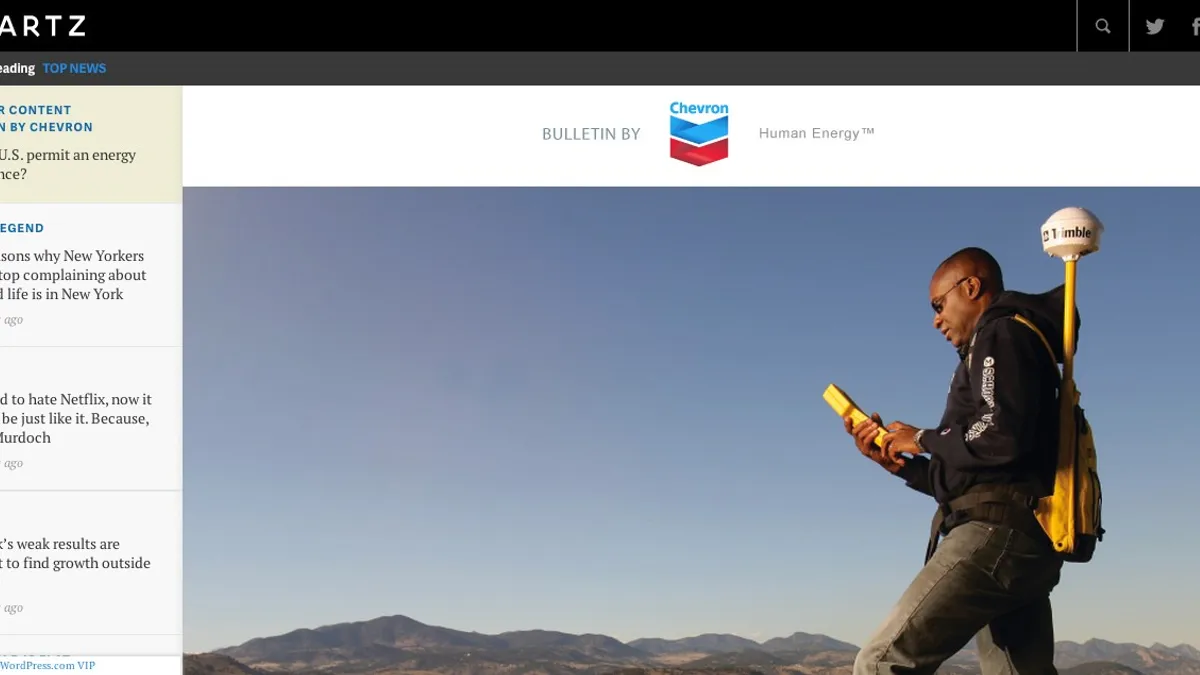Dive Brief:
- Research by the Online Trust Alliance (OTA) on the 100 top news websites found that 69% of those publisher sites include native advertising, but only 9% of those running native ads properly identified the sponsored content as paid ads.
- The OTA report, “Native Advertising Assessment,” gave 71% of the publisher websites a failing grade for misleading readers, while 20% were cited as being in need of improvement.
- Although the FTC has released guidelines on how publishers should label native ads, OTA Executive Director Craig Spiezle told Marketing Land there are few hard and fast rules on labeling sponsored content, pointing out that the FTC doesn’t audit ads or provide a method for scoring.
Dive Insight:
In a world filled with ad blocking, native ads are growing increasingly popular among advertisers and publishers. But brands may want to take caution, as very few native ads are being properly identified, according to the OTA's research. Common reasons that publishers received failing grades include the visual style of the ad content being too similar to editorial content, and labels such as “sponsored by” appearing in hard-to-read light gray.
Separate research from MediaRadar released this week found that 54% of native ads are labeled as “sponsored,” but that 12% have no label at all. Last December, Grady College released a study that found fewer than 8% of its research participants could tell the difference between paid and editorial content.
The failure to properly disclose a native ad may not yet result in any action from the FTC, but it could have a negative impact on brands and publishers if consumers lose trust in them. Research conducted by Research Now for Contently found that 48% of U.S. internet users polled reported feeling "deceived" after realizing an article or video is sponsored content.
The OTA offered publishers recommendations for native advertising, such as using recommended disclosure terminology like “sponsored ad,” ensuring that third parties serving native ads (including ad tech firms Taboola and Outbrain) comply with recommendations, and providing viewers with visual cues that set native ads apart from editorial content.










